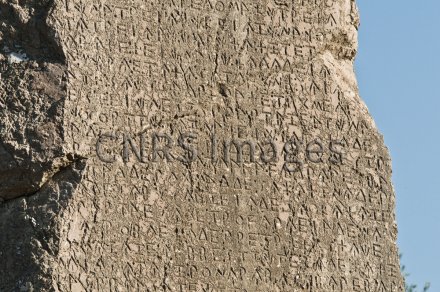Production year
2010

© Hubert RAGUET / CNRS Images
20100001_0828
Ce pilier inscrit (vers 400 avant J.-C.), qui supportait la tombe d'un roi de Xanthos, comporte la plus longue inscription lycienne connue (ici, un détail). Le lycien est une langue indo-européenne apparentée au hittite et encore imparfaitement comprise. L'écriture a été empruntée aux Grecs et adaptée par les Lyciens à leur propre langue vers 500 avant J.-C. Fouilles françaises dirigées par Jacques des Courtils, Xanthos, région de Lycie, Turquie.
The use of media visible on the CNRS Images Platform can be granted on request. Any reproduction or representation is forbidden without prior authorization from CNRS Images (except for resources under Creative Commons license).
No modification of an image may be made without the prior consent of CNRS Images.
No use of an image for advertising purposes or distribution to a third party may be made without the prior agreement of CNRS Images.
For more information, please consult our general conditions
2010
Our work is guided by the way scientists question the world around them and we translate their research into images to help people to understand the world better and to awaken their curiosity and wonderment.